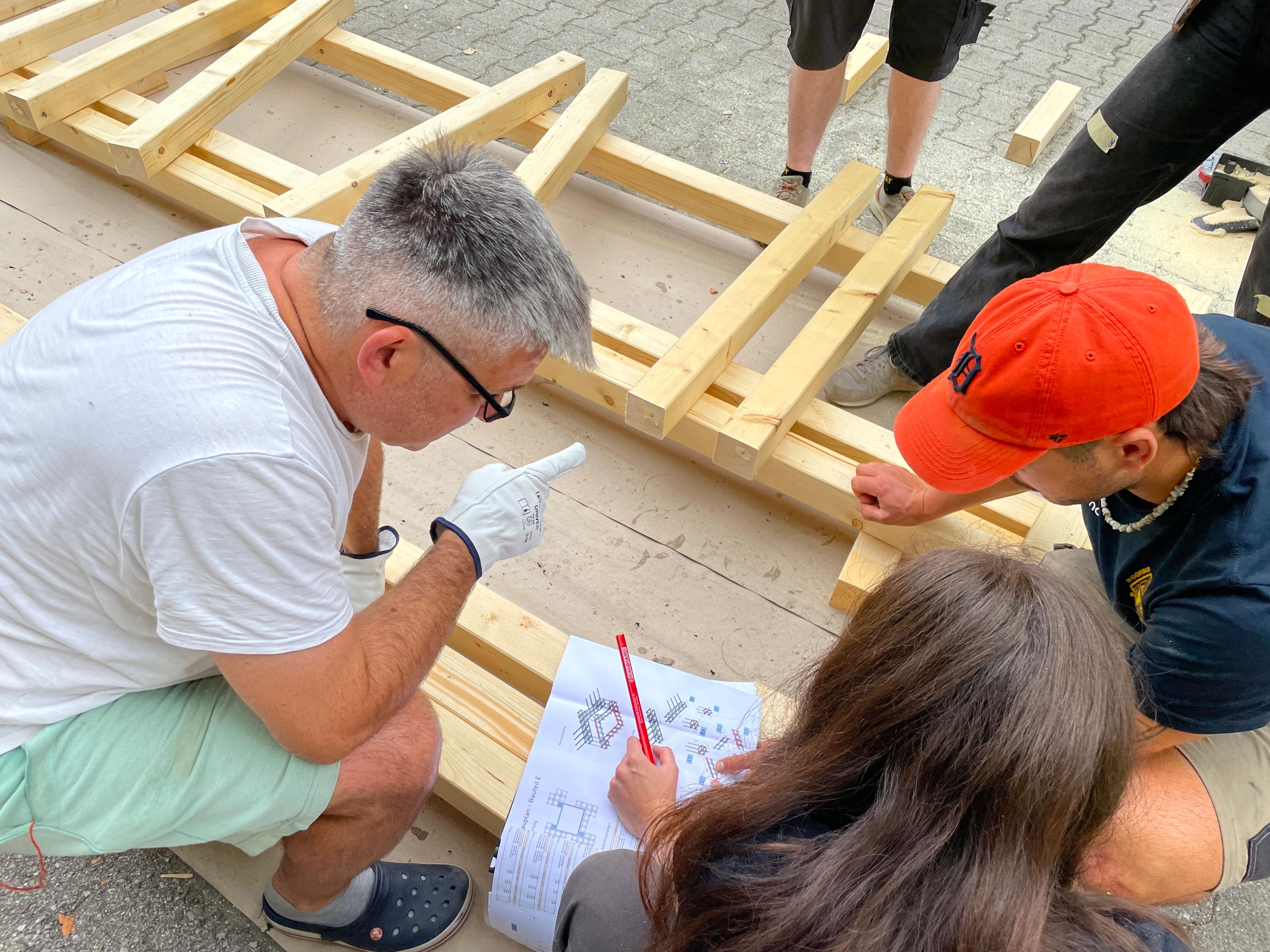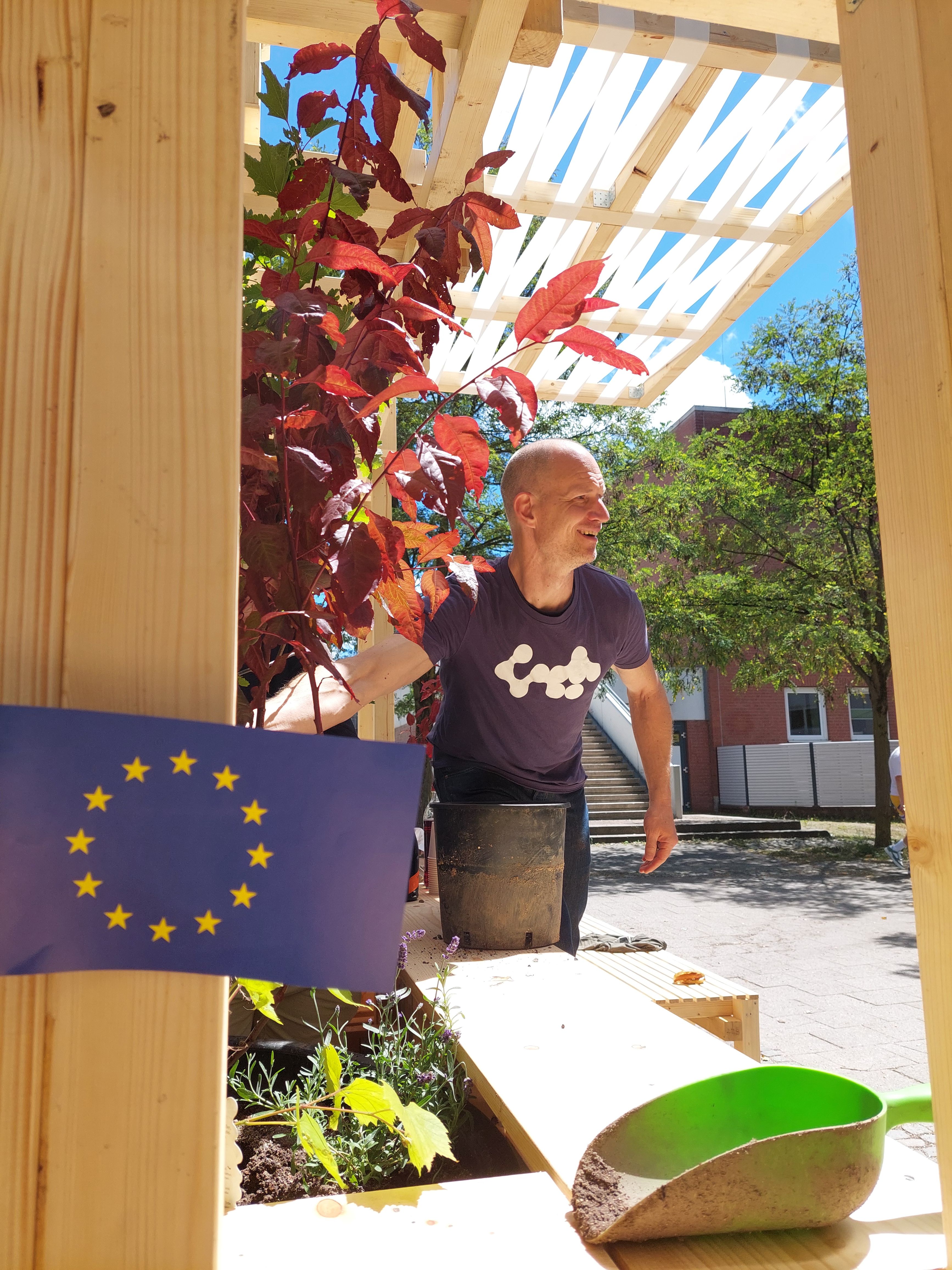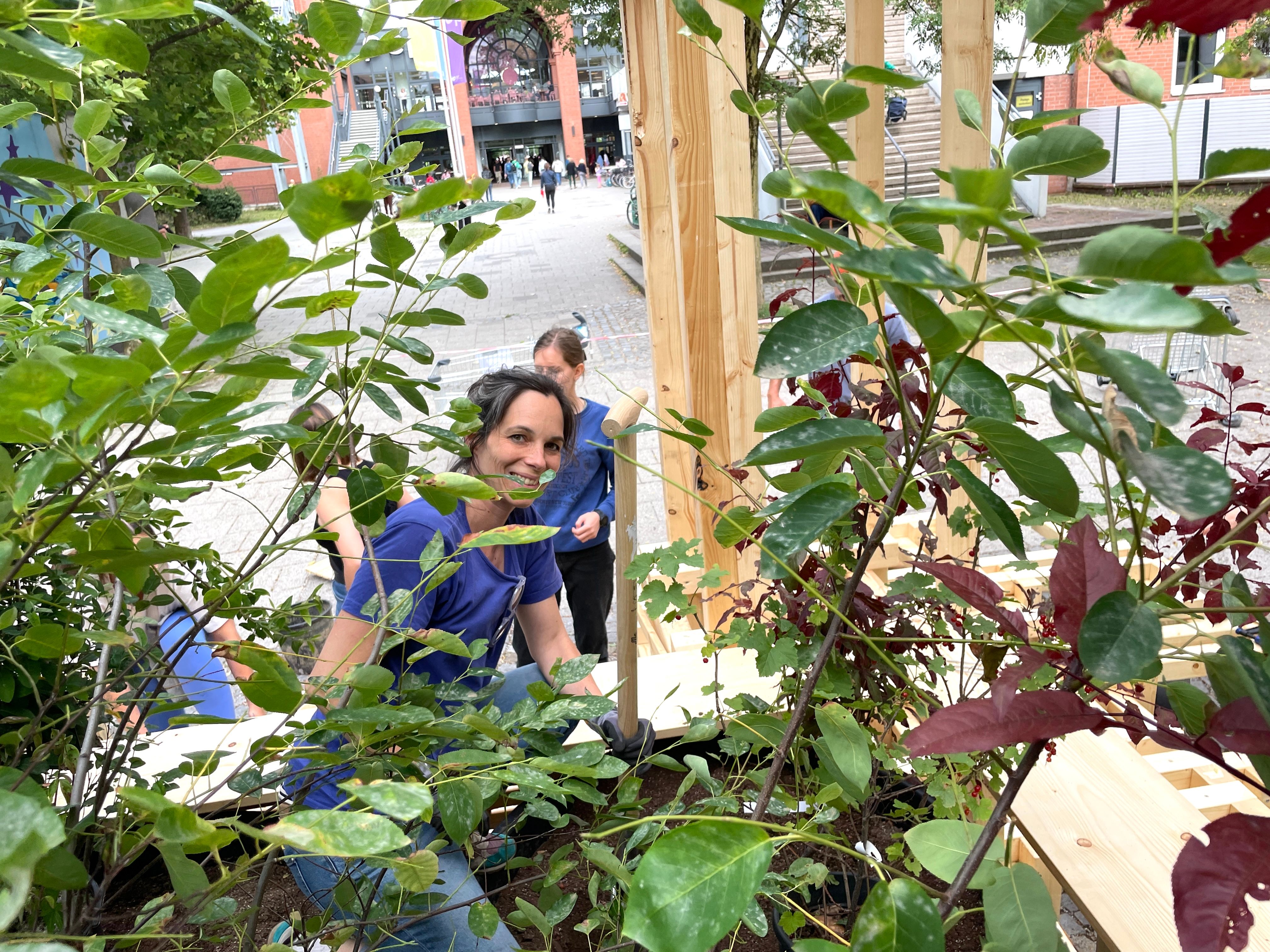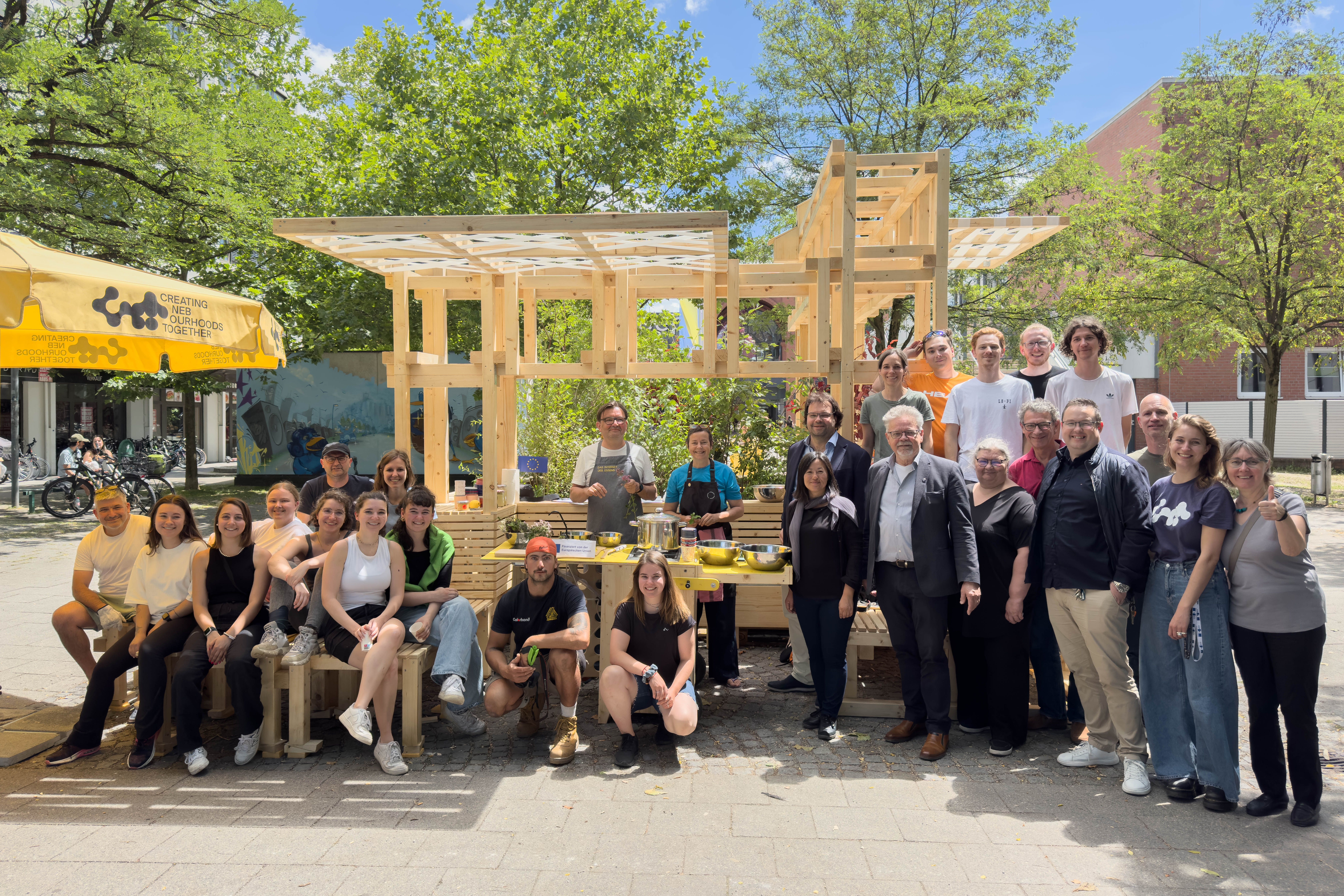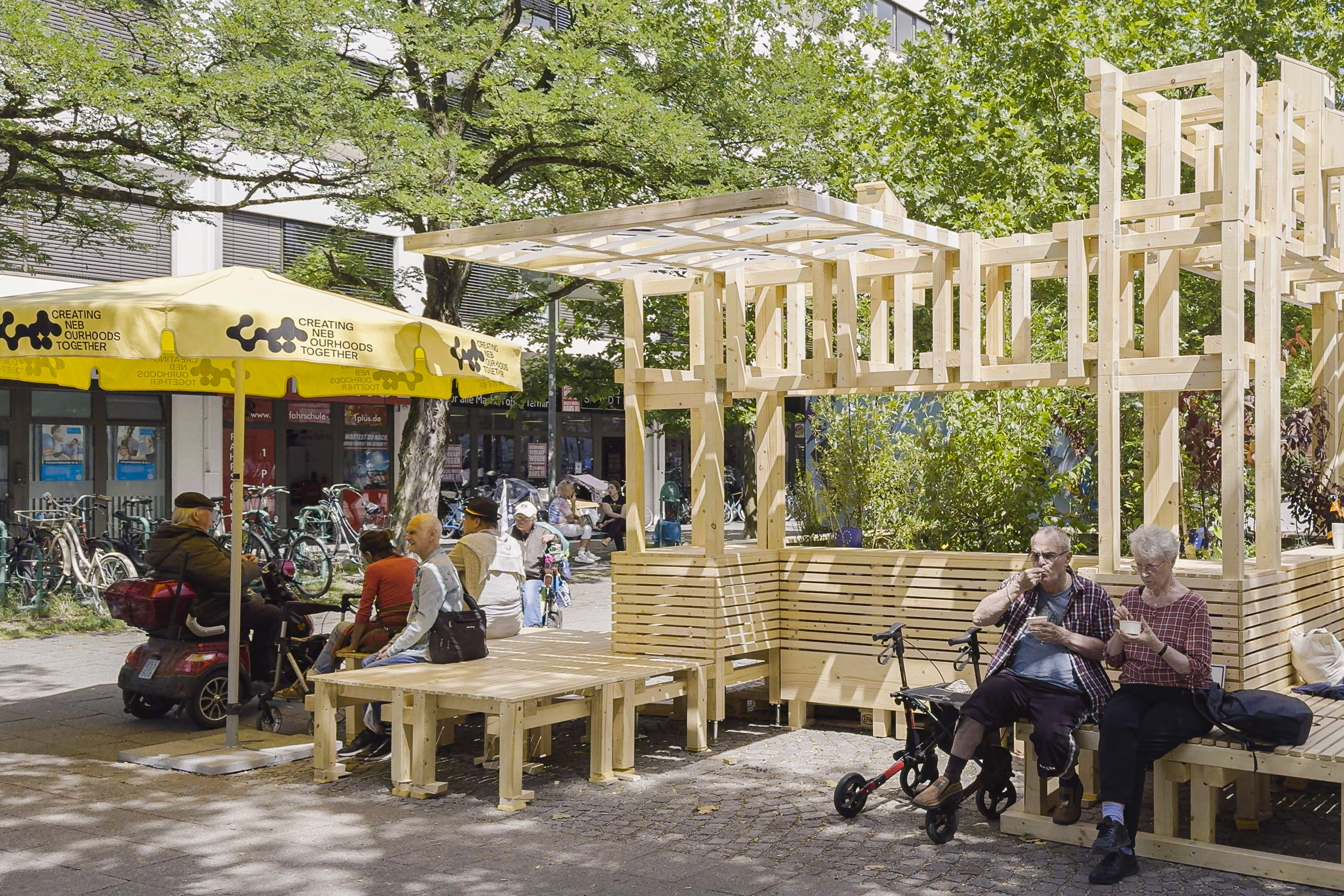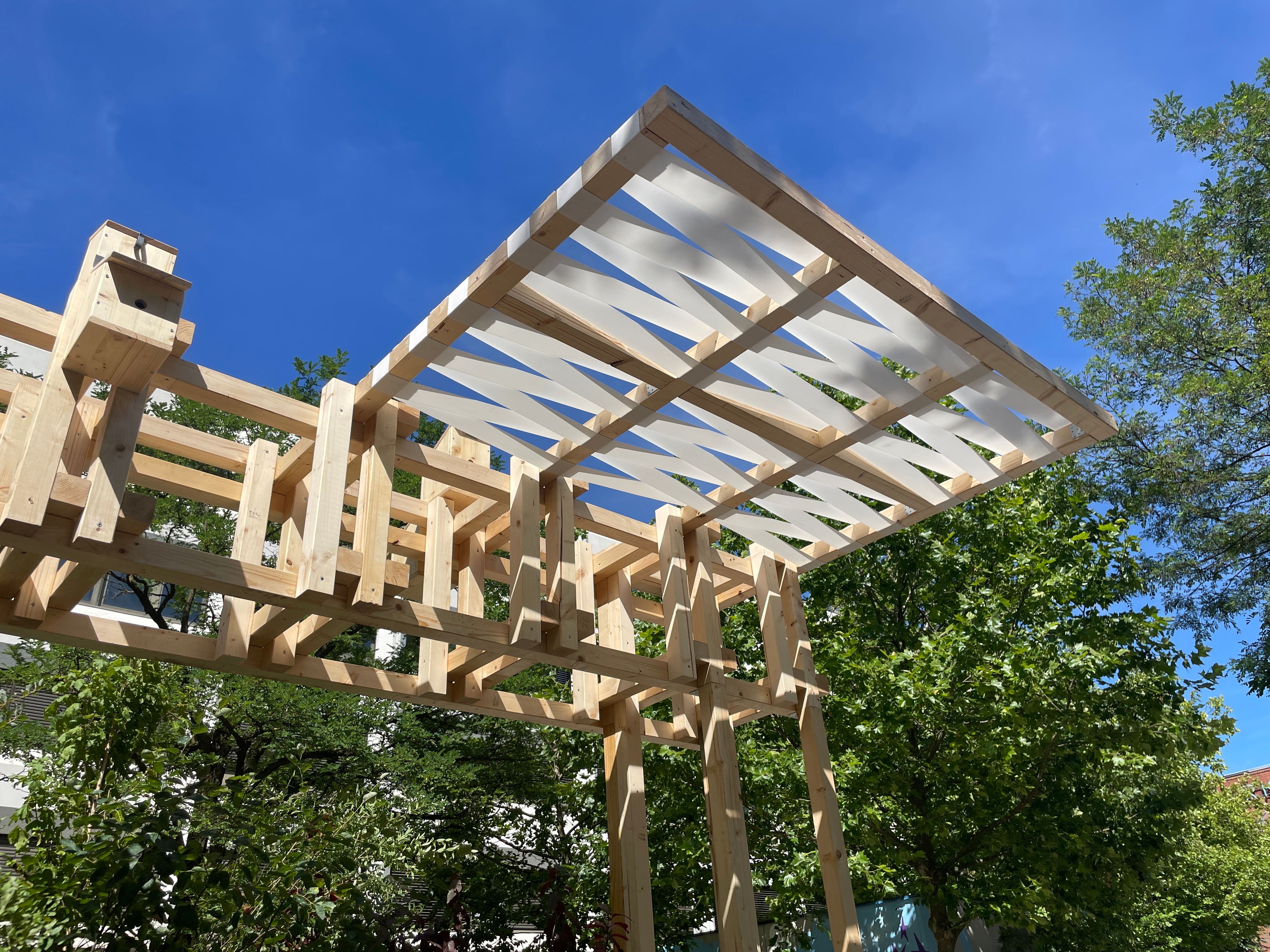"NEBourhoods Nesting Stool": Promoting Urban Biodiversity and Nature in the City

July 2024. What cohabitation spaces for humans and animals could be created if wild animals were already considered in the design processes of architecture, open spaces and urban planning? Using the "Animal-Aided Design" planning method, we looked for solutions to this question as part of "Creating NEBourhoods Together", with the goal of promoting urban biodiversity in Neuperlach. The focus was particularly on existing and planned green spaces as well as residential and commercial buildings, new buildings and energy-efficient refurbishments.
The result is the "NEBourhoods Nesting Stool": a modular timber structure that provides not only seating and sunbathing decks but also space for trees, perennial shrubs and edible plants, as well as sunshades and nesting aids for birds, bats and wild bees. It is a sculpture that combines habitats for people, animals and plants. The prototype can be dismantled and can therefore be relocated as needed.
Development of the prototype: Inventory and target species identification
In the first phase of the NEB Action "Animal-Aided Design", the Studio Animal-Aided Design team responsible for the NEB Action determined a regional species pool for Neuperlach comprising around 400 animal species. A comparison with the local site conditions led to the pre-selection of 90 animal species for which Neuperlach could be made liveable. The target species were further narrowed down in a participatory species selection workshop involving experts and representatives from Neuperlach. The selection was based on questions such as where the species could be best integrated in Neuperlach or where innovative measures for the animal species could also have a positive impact on Neuperlach, as well as questions about possible locations for habitat elements. After analysing the workshop results and squaring them with needs and possible measures, the team settled on 14 target species.
The aim was also to cover a broad spectrum of species and to develop different habitats, for example through possible facade or roof greening, professional enlargement of green spaces or increasing the food supply through flower-, fruit- and seed-rich copses and shrubs. The greatest potential was identified for bats, wild bees, butterflies and prominent urban birds such as the house sparrow.
Concrete implementation on site
But how can open space planning and urban development designs and scenarios be created for the possible coexistence of people, animals and plants?
In order to translate the results of the analysis into habitat elements in the actual urban environment, further collaboration took place with the landscape architect and urban planner Dr Susann Ahn and the landscape architect Prof. Dr Thomas E. Hauck from the Technische Universität Wien. Together with students from their research area "Landscape Architecture and Landscape Planning", they analysed meeting points and recreational spaces for residents in Neuperlach. The places were evaluated for possible appropriation by animals. The students made analytical use of a pair of terms coined by geographers Philo and Wilbert: "animal spaces" (spaces that humans allow animals to use, such as zoos, stables, pastures, wilderness) and "beastly places" (places that are actually used by animals).
In an open and unbiased approach, the students developed a wide variety of designs – from net structures over pedestrian bridges and on facades to garden houses, biodiversity modules for roof gardens and a bat tower as a system of timber layers. The design by Hannah Hribek, Larissa Landa and Raya Veselinova selected for implementation is oriented along the lines of existing structures in Neuperlach, such as free-standing pergolas or those with seating in front of a green wall. Thanks to its modular structure with habitat elements for different animal species, it can be adapted to different locations.
In the long term, the sculpture, which was inaugurated in early July 2024, will become part of a new neighbourhood garden, which can gradually be supplemented with further ideas for the coexistence of people and animals. Initial ideas for this include wild bee nesting aids made of sand and clay, the construction of facade quarters for bats and the embedding of an urban roof garden featuring edible plants for the neighbourhood and other target animal species.
Raising awareness among the population
To raise awareness of biodiversity in urban areas and of animal habitats among Neuperlach residents, the NEB "Animal-Aided Design" campaign offered a species trail in collaboration with creative designer Sarah Dorkenwald from UnDesignUnit. The animals' habitats were introduced in a playful way through experimental changes in perspective. In subsequent discussion forums, the team worked together with the neighbourhood to develop ideas for what an animal-friendly city could look like and how multispecies coexistence could be organised.
Further information on the Animal-Aided Design method
LOCATION
Forecourt of Charles-de-Gaulle-Straße 2a / exit PEP Einkaufscenter in the direction of Wohnring
LIVING LAB NEIGHBOURHOOD GARDEN
THEMES
Biodiversity • cohabitation • urban biodiversity • green city • nature in the city
PARTICIPANTS
NEB Action Animal-Aided Design
Design:
Prof. Dr Thomas E. Hauck, Prof. Dr Susann Ahn, Philip Castilleja, Christine Jakoby, Julia Ahm, Todor Andonov, Emanuel Braun, Sebastian Fehringer, Arianna Fois, Clara Frühwald, Nina Verena Gsöllpointner, Maike Heßmann, Maria Rosa Hochreiter, Marie Kaiser, Annalena Kindt, Sophia Lanner, Sandra Obermann, Julia Olf, Sophie Philipp, Tobias-Christoph Piesch, Anastasia Prozorovska, Eliana Ray, Philip Gideon Marius Riedel, Laura-Marie Sipple, Paula Johanna Tappe
Target species workshop with representatives from:
• Departments of the City of Munich Urban Planning & Building Regulations, Climate & Environmental Protection, Education & Sport
• WSB housing association
• Landesbund für Vogelschutz (State Federation for the Protection of Birds)
• Local Group Munich East of the Bund für Naturschutz
• Münchner Gesellschaft für Stadterneuerung (Munich Association for Urban Renewal)
• Churches in Neuperlach
Implementation site:
pep Einkaufscenter Neuperlach / ECE Marketplaces GmbH & Co. KG
Picture credits: NEBouhoods/Architekturgalerie München/Patrik Thomas, City of Munich/Sylvia Pintarits, TU Wien/Susann Ahn

